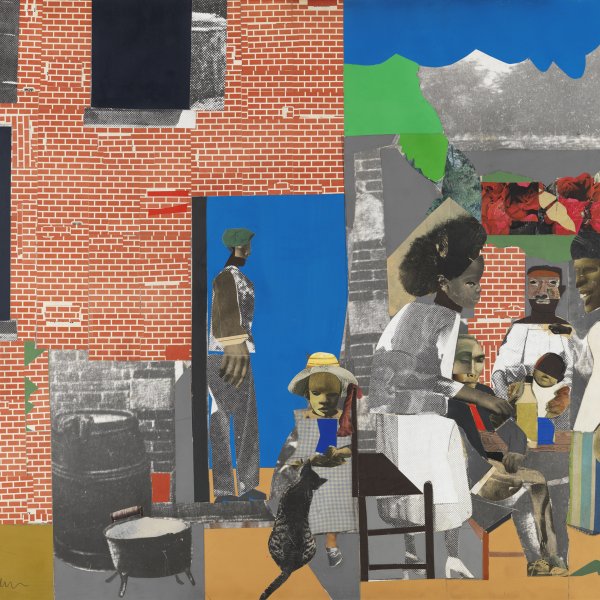Romare Bearden
Romare Bearden hailed from an African American family that played an active part in the cultural renaissance in Harlem beginning in the 1920s. This brought him into contact with poets, painters and musicians throughout his childhood and youth. Bearden began reading science and mathematics at university, but soon opted for the arts, studying first at Boston University and later under George Grosz at the Art Students League. He finally graduated from New York University and while still a student contributed frequently as a draughtsman to The Medley magazine. Thereafter he designed the covers for many publications, such as Fortune and Times, and began to publish essays on artistic and social themes.
From the mid-1930s to 1969, Bearden was a social worker in New York and dabbled in art in his free time. His first solo exhibition was held in Harlem in 1940, and he began to be represented by the Samuel Kootz Gallery at the end of the decade. He alternated his first paintings and collages with murals and stage design for Alvin Ailey’s American Dance Theater and for his wife Nanette’s contemporary dance company.
Throughout his lifetime Bearden fought for equal rights for the African American population and the themes of his works reflect this concern. In 1963 he established the Spiral association together with other African American artists and the following year was the first artistic director of Harlem Cultural Council. He was also involved in the establishment of the Studio Museum in Harlem and the Cinque Gallery, which provided support to artists from ethnic minorities.





